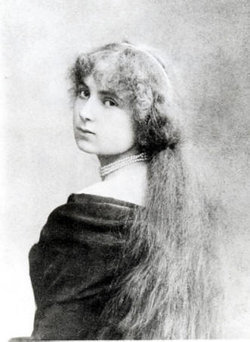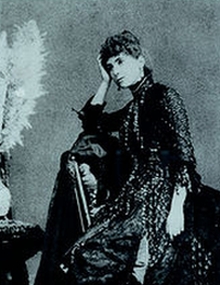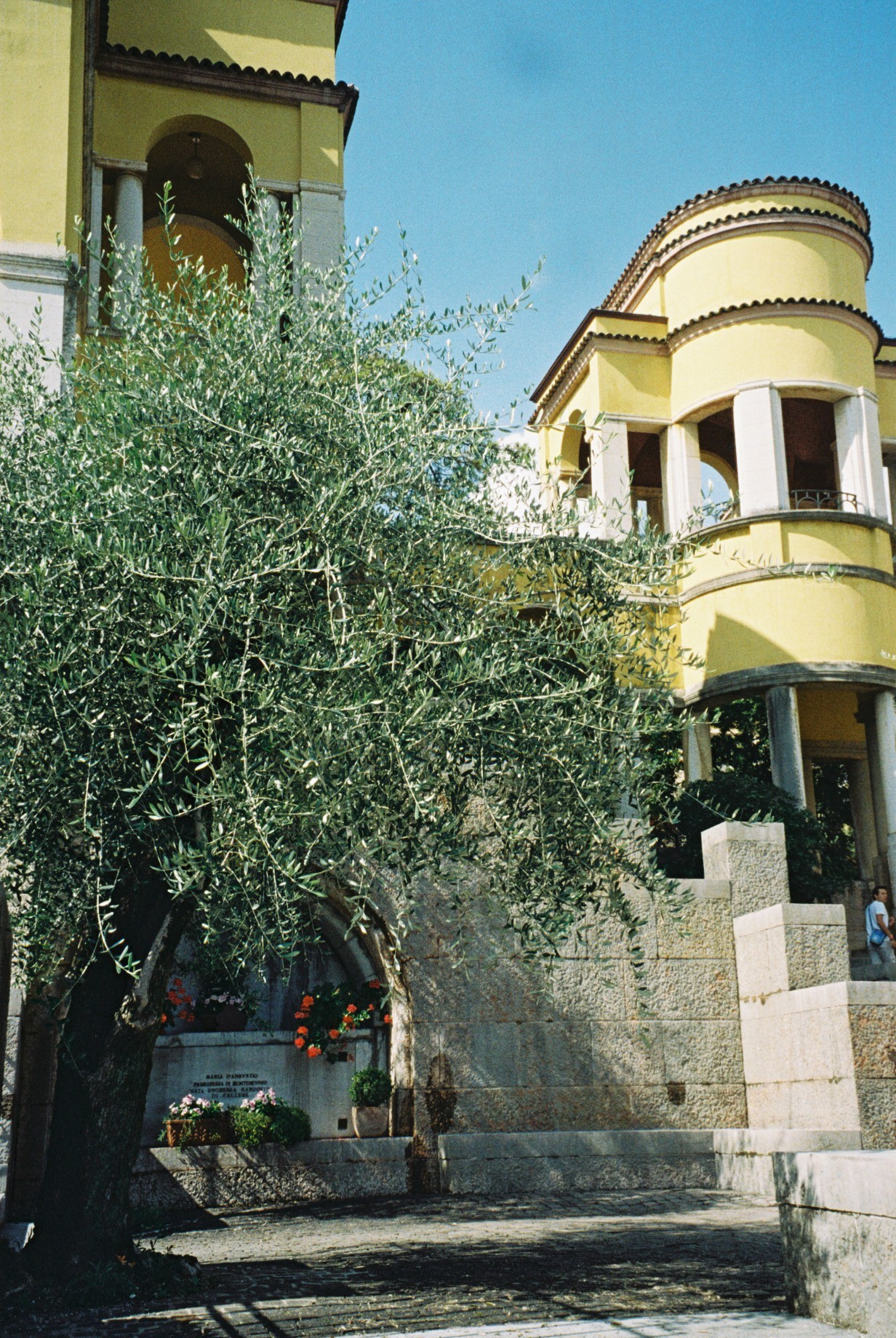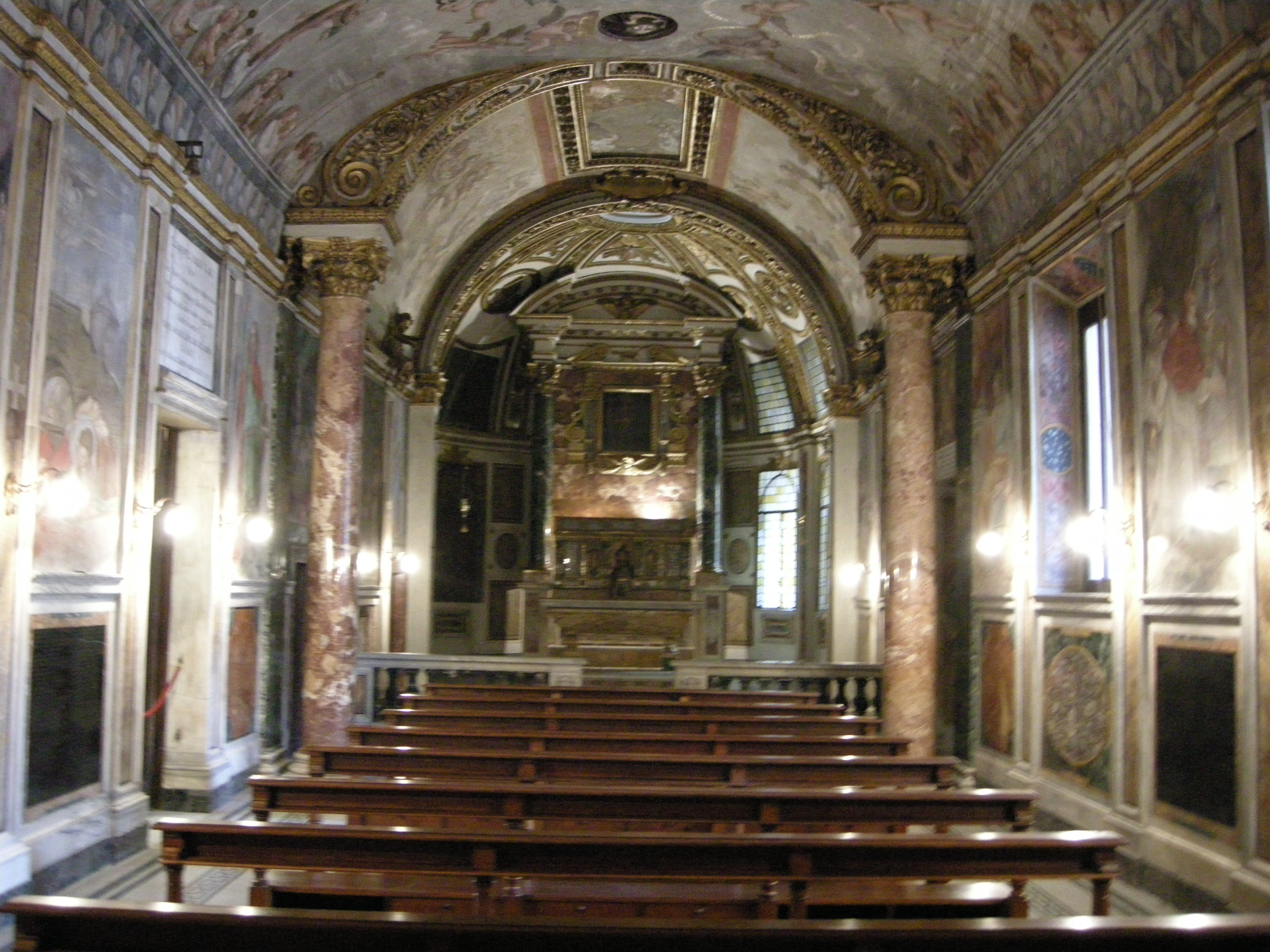Daughter of Natalia Lezzani and of Duke Giulio di Gallese. Her father was born Jules Hardouin, at Caen in 1823, the son of a watchmaker. A non-commissioned officer of the French cavallery, he came to Rome with the troops sent by the French Republic in 1849 to re-establish Papal rule. Jules became a mercenary of the Papal States military. In 1850 he married Lucrezia Alessandrina Altemps, the young widow of Marco Aniceto Altemps, Duca di Gallese. In 1861 she convinced the Vatican authorities to bestow on her second husband the dukedom as well as the title of marchese delle Rocchette.
After the death of Lucrezia, Jules Hardouin married Natalia Lezzani (born around 1843, died 1925), a marquess originating in Ticino (Switzerland). They had two children, Luigi in 1862, and Maria, both born in Palazzo Altemps, before separating.
After the unification of Italy, Jules Hardouin had his ducal title recognized by the new kingdom only in 1886. He died in 1905.
His daughter got to know the young poet and journalist Gabriele D'Annunzio (originally Gabriele Rapagnetta d’Annunzio) on 5 February 1883. Her parents, especially her father and despite his own modest origin, were unhappy with this relation, as they had intended Maria to marry in their social circles. Soon she became pregnant, her lover having made public their intimacy by the famous poem "The sin of May". They married on 28 July of the same year in the chapel of Palazzo Altemps of Rome, Jules being absent.
The couple moved to D'Annunzio´s home region of Abruzzo, thus escaping the ire of Maria´s parents as well as Gabriele´s multiple creditors.
On 13 January 1884, Maria at Pescara gave birth to Mario. In mid-1885, the couple returned to Rome, where in April 1886 Gabriellino was born, followed in September 1887 by Ugo Veniero. In the meantime the matrimony had deteriorated, above all by reason of numerous extramarital affairs of D'Annunzio and his profligate spending. In 1890 the couple separated, without ever divorcing. In 1899, the consorts arrived at a settlement of separation in which financial aspects were settled and parental care adjudicated to the father.
Maria divided her life between Rome and Paris, where she entered a relation with the writer Robert de Montesquiou. Still, she gave shelter in France to D´Annunzio when he fled from his debts.
During the First World War, D'Annunzio sided with the interventionist movement which wanted Italy to enter the conflict on the side of the Entente, especially in order to regain from the Austrian Empire territories populated by Italians. In this logic, he became leader of a troop of irregulars which occupied the Adria city of Fiume / Rijeka from September 1919 till end 1920. With the end of this adventure, the Kingdom of Italy bestowed on D´Annunzio the title of Principe di Montenevoso, his wife thus becoming a Princess.
When the poet built his sumptuous residence "Il Vittoriale" on lake Garda, she returned to Italy, staying close to him and in good contact, residing in Gardone. After D´Annunzio´s death on 1 March 1938, she moved to villa Marabella in Vittoriale park.
At the difference of her husband, buried on a column on a hill of il Vittoriale surrounded by the sarcophagi of his war companions, Maria´s grave is adjacent to the main building.
Il Vittoriale is a 90.000 sq metre park territory above Garda lake, which the poet acquired in 1922. It is a symbol of the unreflected attitude of many Italians with respect to the era of fascism. The expositions (and guided visits) present an uncritical eulogy of D´Annunzio´s life. Aspects like his violent warmongering, his brutal reign of the city of Fiume / Rijeka and his role in the Mussolini era are not discussed at all. In fact many contemporaries perceived him as a figurehead of the régime. The question could be asked how a man indebted for most of his lifetime could acquire, during the time of a dictatorship, such a huge property.
Daughter of Natalia Lezzani and of Duke Giulio di Gallese. Her father was born Jules Hardouin, at Caen in 1823, the son of a watchmaker. A non-commissioned officer of the French cavallery, he came to Rome with the troops sent by the French Republic in 1849 to re-establish Papal rule. Jules became a mercenary of the Papal States military. In 1850 he married Lucrezia Alessandrina Altemps, the young widow of Marco Aniceto Altemps, Duca di Gallese. In 1861 she convinced the Vatican authorities to bestow on her second husband the dukedom as well as the title of marchese delle Rocchette.
After the death of Lucrezia, Jules Hardouin married Natalia Lezzani (born around 1843, died 1925), a marquess originating in Ticino (Switzerland). They had two children, Luigi in 1862, and Maria, both born in Palazzo Altemps, before separating.
After the unification of Italy, Jules Hardouin had his ducal title recognized by the new kingdom only in 1886. He died in 1905.
His daughter got to know the young poet and journalist Gabriele D'Annunzio (originally Gabriele Rapagnetta d’Annunzio) on 5 February 1883. Her parents, especially her father and despite his own modest origin, were unhappy with this relation, as they had intended Maria to marry in their social circles. Soon she became pregnant, her lover having made public their intimacy by the famous poem "The sin of May". They married on 28 July of the same year in the chapel of Palazzo Altemps of Rome, Jules being absent.
The couple moved to D'Annunzio´s home region of Abruzzo, thus escaping the ire of Maria´s parents as well as Gabriele´s multiple creditors.
On 13 January 1884, Maria at Pescara gave birth to Mario. In mid-1885, the couple returned to Rome, where in April 1886 Gabriellino was born, followed in September 1887 by Ugo Veniero. In the meantime the matrimony had deteriorated, above all by reason of numerous extramarital affairs of D'Annunzio and his profligate spending. In 1890 the couple separated, without ever divorcing. In 1899, the consorts arrived at a settlement of separation in which financial aspects were settled and parental care adjudicated to the father.
Maria divided her life between Rome and Paris, where she entered a relation with the writer Robert de Montesquiou. Still, she gave shelter in France to D´Annunzio when he fled from his debts.
During the First World War, D'Annunzio sided with the interventionist movement which wanted Italy to enter the conflict on the side of the Entente, especially in order to regain from the Austrian Empire territories populated by Italians. In this logic, he became leader of a troop of irregulars which occupied the Adria city of Fiume / Rijeka from September 1919 till end 1920. With the end of this adventure, the Kingdom of Italy bestowed on D´Annunzio the title of Principe di Montenevoso, his wife thus becoming a Princess.
When the poet built his sumptuous residence "Il Vittoriale" on lake Garda, she returned to Italy, staying close to him and in good contact, residing in Gardone. After D´Annunzio´s death on 1 March 1938, she moved to villa Marabella in Vittoriale park.
At the difference of her husband, buried on a column on a hill of il Vittoriale surrounded by the sarcophagi of his war companions, Maria´s grave is adjacent to the main building.
Il Vittoriale is a 90.000 sq metre park territory above Garda lake, which the poet acquired in 1922. It is a symbol of the unreflected attitude of many Italians with respect to the era of fascism. The expositions (and guided visits) present an uncritical eulogy of D´Annunzio´s life. Aspects like his violent warmongering, his brutal reign of the city of Fiume / Rijeka and his role in the Mussolini era are not discussed at all. In fact many contemporaries perceived him as a figurehead of the régime. The question could be asked how a man indebted for most of his lifetime could acquire, during the time of a dictatorship, such a huge property.










